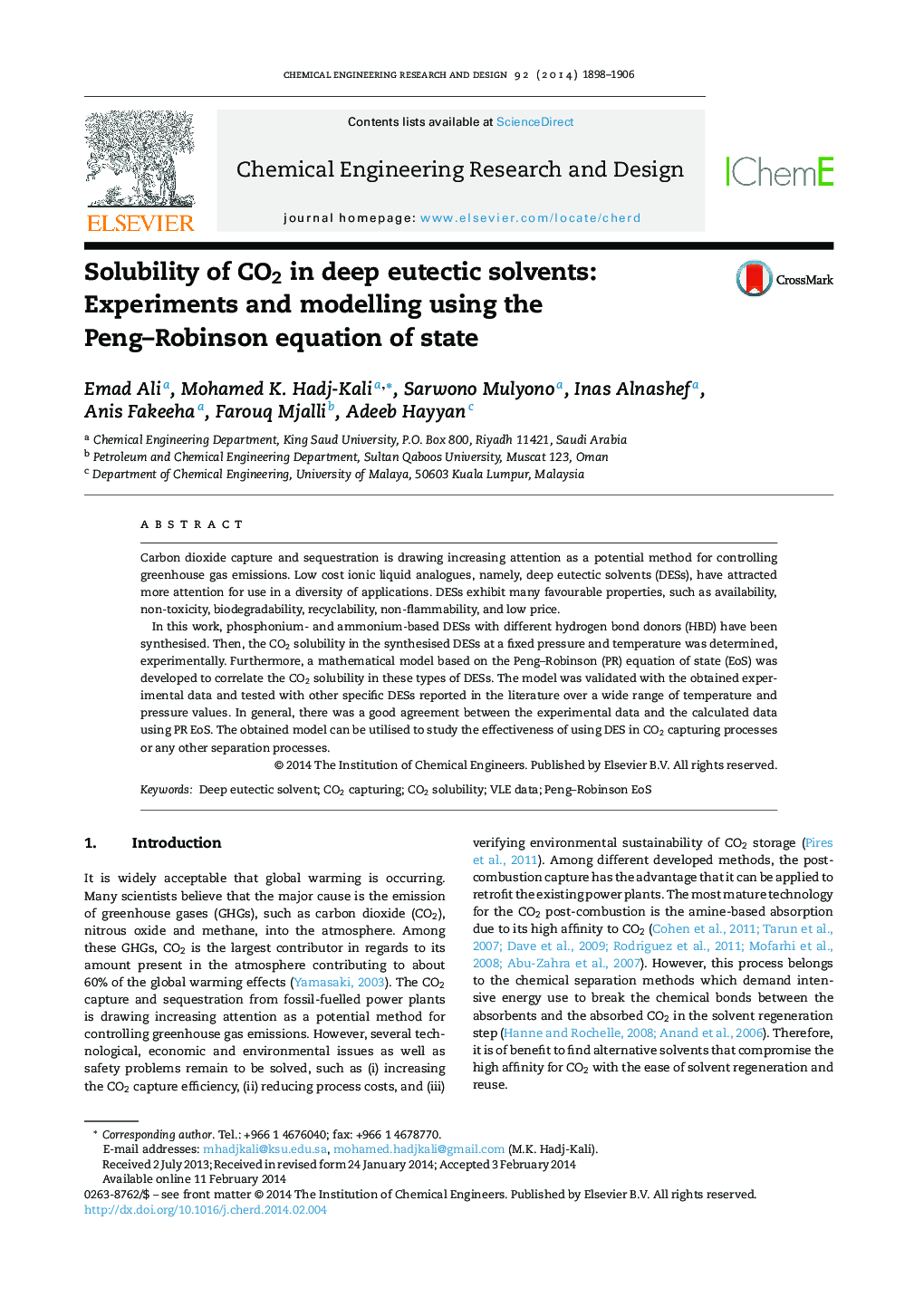| Article ID | Journal | Published Year | Pages | File Type |
|---|---|---|---|---|
| 620601 | Chemical Engineering Research and Design | 2014 | 9 Pages |
•Phosphonium and ammonium based deep eutectic solvents (DESs) were synthesised.•Novel class of DESs using amines as hydrogen bond donors (HBDs) were examined.•CO2 solubility in different DESs was measured experimentally.•Mono-ethanol amine (MEA) as HBD increased the CO2 solubility substantially.•The PR EoS was successfully used to model CO2 measured solubilities.
Carbon dioxide capture and sequestration is drawing increasing attention as a potential method for controlling greenhouse gas emissions. Low cost ionic liquid analogues, namely, deep eutectic solvents (DESs), have attracted more attention for use in a diversity of applications. DESs exhibit many favourable properties, such as availability, non-toxicity, biodegradability, recyclability, non-flammability, and low price.In this work, phosphonium- and ammonium-based DESs with different hydrogen bond donors (HBD) have been synthesised. Then, the CO2 solubility in the synthesised DESs at a fixed pressure and temperature was determined, experimentally. Furthermore, a mathematical model based on the Peng–Robinson (PR) equation of state (EoS) was developed to correlate the CO2 solubility in these types of DESs. The model was validated with the obtained experimental data and tested with other specific DESs reported in the literature over a wide range of temperature and pressure values. In general, there was a good agreement between the experimental data and the calculated data using PR EoS. The obtained model can be utilised to study the effectiveness of using DES in CO2 capturing processes or any other separation processes.
Graphical abstractFigure optionsDownload full-size imageDownload high-quality image (197 K)Download as PowerPoint slide
